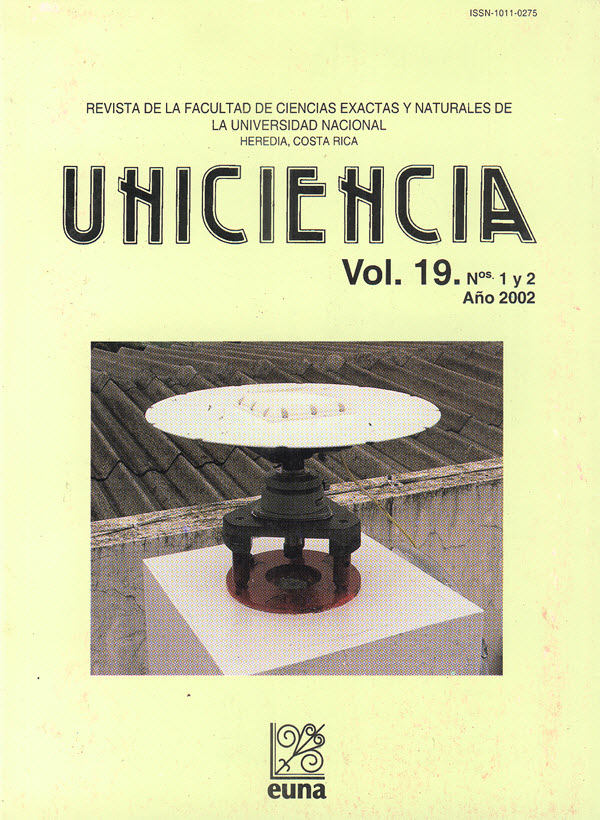Abundancia, diversidad y categoría ecológica de los peces en estero damas y estero Palo Seco, Costa Rica (ING)
Keywords:
Ichthyofauna, abundance, species diversity, similarity coefficient, estuaries, Costa Rica.Abstract
We collected fishes from June of 1986 to February of 1987 at three sampling station; one in the Palo Seco estuary and the other two at Damas estuary (Damas and San Bosco), Central Pacific, Costa Rica. Water temperature didn’t show significant differences between the Damas and San Bosco stations, but did show differences between Damas-Palo Seco and San Bosco-Palo Seco. The salinity changed significantly between the three stations and pH was very similar at all sities. We collected samples from 25 families, 39 genera and 54 species. Eighteen species are from all three sampling sites while seven came exclusively from Palo Seco; five from Damas and six from San Bosco. Out of all species collected, 7,41% are shared between Palo Seco and Damas; 3,70% between Palo Seco and San Bosco and 22,22% between Damas and San Bosco. Similarity analysis indicates that Damas and San Bosco stations share 41,40% of the species; while Palo Seco only showed 9,9% of common species with the group Damas-San Bosco. Most species are marine and they use these estuaries for breeding (42,59%) and feeding (40,74%). Freshwater specie, estuarines and occasional visitors are not well represented. The most diversity was found San Bosco and we found statistically significant differences in the H’ values among all three stations. The most similarities were found between Damas and San Bosco stations, suggesting that these areas are under a stronger influence from continental waters facilitating a better distribution of species. We concluded that the ichthyofauna from the studied estuaries is transitory at the sampling sites and that it is also heterogeneously distributed.
References
-
Downloads
Published
Issue
Section
License
Authors who publish with this journal agree to the following terms:
1. Authors guarantee the journal the right to be the first publication of the work as licensed under a Creative Commons Attribution License that allows others to share the work with an acknowledgment of the work's authorship and initial publication in this journal.
2. Authors can set separate additional agreements for non-exclusive distribution of the version of the work published in the journal (eg, place it in an institutional repository or publish it in a book), with an acknowledgment of its initial publication in this journal.
3. The authors have declared to hold all permissions to use the resources they provided in the paper (images, tables, among others) and assume full responsibility for damages to third parties.
4. The opinions expressed in the paper are the exclusive responsibility of the authors and do not necessarily represent the opinion of the editors or the Universidad Nacional.
Uniciencia Journal and all its productions are under Creative Commons Atribución-NoComercial-SinDerivadas 4.0 Unported.
There is neither fee for access nor Article Processing Charge (APC)






